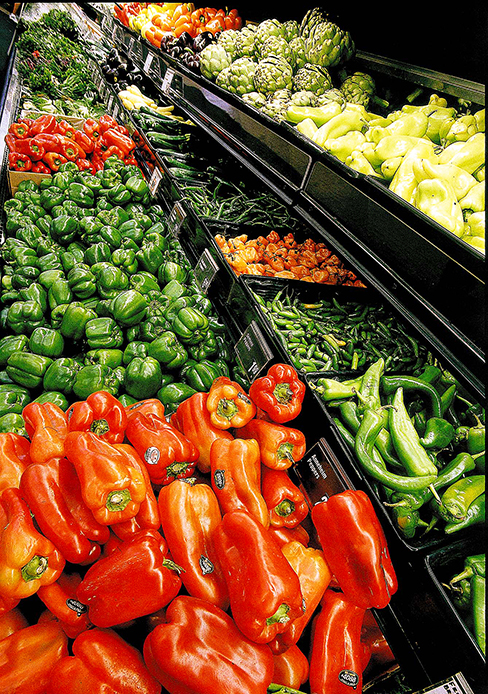
Food options such as fresh vegetables and fruits are limited in supply at OSU’s C-Store. Credit: Courtesy of MCT
Ohio State is powerful. To deny this is to deny the blue in the sky, the fluidity of water.
The choices we make as both students and a university — be they as seemingly small as vending options or as large and impactful as energy policy — make an undeniable, unquestioned splash. We make waves here at OSU. We set precedents.
Bearing that in mind, why not lead the charge in one of the most fundamental, societally salient fields? In something as simple yet essential as food? For while yes, the university indeed offers some healthy options at their various on-campus venues, there remains one notable void: campus C-Stores.
As one walks into the North Commons C-Store, he or she is met by a seeming dichotomy — the small space is brimming with brightly packaged, ever-familiar brands. Oreos and Reese’s Puffs, Campbell’s Soup and Ramen Noodles. But despite slight differences in taste and appearance, many of these foods are in essence the same: simply clever concoctions of corn and soy, veiled by words like “dextrose” and “dextrin.”
To their credit, C-stores do offer healthy and diet-accommodating options: meal bars, select trail mixes and Greek yogurt, among others. But herein ultimately lies the issue, these options are just that — options. They are the minority: a school of fish in a sea of fat, sugar and highly processed, obesity- and disease-linked foods.
When I walked into the North Commons C-Store on an ordinary Saturday afternoon, I counted 63 options for candy, 48 for chips, and two for produce: strawberries and those small, pre-packaged party trays of grapes, cheese, cauliflower, etc. I don’t claim to be an expert, but when number of Chex Mix variants alone surpasses that of fruits, something needs to be done.
From my vantage point as an on-campus resident and meal-plan adherent, this in no way, shape or form encourages healthy eating. Quite the opposite. With superfluous, end-of-the-semester blocks a reality for many, myself included, I want at least a greater choice. I don’t want certain products (and by effect, certain environmentally-degrading, health-damaging industries) forced on me.
And I’m not alone. In a recent survey conducted by the Local Matters Student Ambassadors, which aim to raise support for local issues, nearly 36 percent of surveyed students were either “unsatisfied” or “very unsatisfied” with the variety of food in campus C-Stores (survey conducted on nearly 200 students). Many also expressed a desire for whole, unprocessed foods like “almonds,” “eggs,” “whole wheat bread” and “single serve frozen veggies” to join the ranks of current C-Store products.
The demand exists. It’s simply untapped.
And while I understand that OSU has scores of private, revenue- and opportunity-generating contracts with conglomerates like Coca-Cola, I also understand the need for balance: the need for produce to outnumber candy — not the other way around.
So what, ultimately, is the importance of cutting the crap from — or at least increasing the options on — C-store shelves? What is the benefit of this greater parity?
In doing so, we further not only the health and well-being of our campus community, but also that of society: We decrease our affair with those highly subsidized soy- and corn- giants and all the while increase demand for whole, healthy foods — foods fraught not with chemicals, nor with environmental and public health consequences.
We make a small, albeit essential, step.


